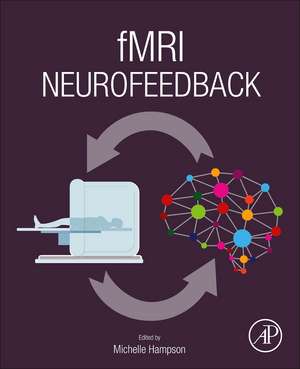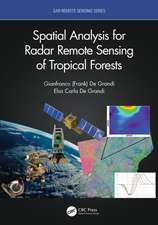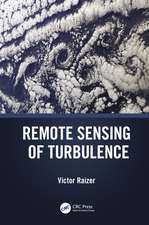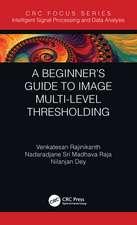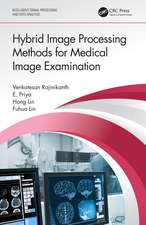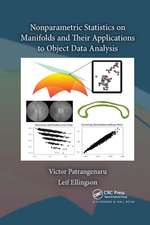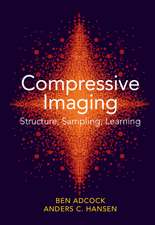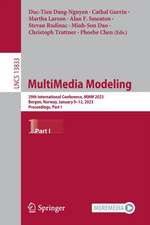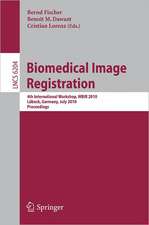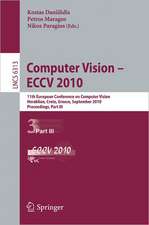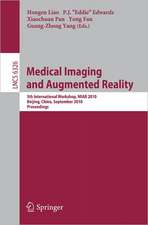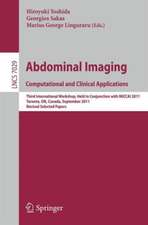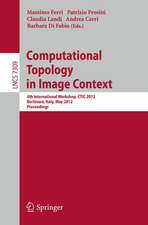fMRI Neurofeedback
Editat de Michelle Hampsonen Limba Engleză Paperback – 7 oct 2021
This book is designed to be accessible to all scientists and clinicians interested in conducting fMRI neurofeedback research, addressing the variety of different knowledge gaps that readers may have given their varied backgrounds and avoiding field-specific jargon. The book, therefore, will be suitable for engineers, computer scientists, neuroscientists, psychologists, and physicians working in fMRI neurofeedback.
- Provides a reference on fMRI neurofeedback covering history, methods, mechanisms, clinical applications, and basic research, as well as ethical considerations
- Offers contributions from international experts—leading research groups are represented, including from Europe, Japan, Israel, and the United States
- Includes coverage of data analytic methods, study design, neuroscience mechanisms, and clinical considerations
- Presents a perspective on future translational development
Preț: 849.18 lei
Preț vechi: 1061.48 lei
-20% Nou
Puncte Express: 1274
Preț estimativ în valută:
162.49€ • 177.22$ • 137.01£
162.49€ • 177.22$ • 137.01£
Carte tipărită la comandă
Livrare economică 24 aprilie-08 mai
Preluare comenzi: 021 569.72.76
Specificații
ISBN-13: 9780128224212
ISBN-10: 0128224215
Pagini: 364
Ilustrații: 75 illustrations (30 in full color)
Dimensiuni: 191 x 235 x 26 mm
Greutate: 0.63 kg
Editura: ELSEVIER SCIENCE
ISBN-10: 0128224215
Pagini: 364
Ilustrații: 75 illustrations (30 in full color)
Dimensiuni: 191 x 235 x 26 mm
Greutate: 0.63 kg
Editura: ELSEVIER SCIENCE
Cuprins
1. A brief history of real-time fMRI neurofeedback
SECTION 1: Introduction methods section
2. Analysis methods for real-time fMRI neurofeedback
3. Protocol design in fMRI neurofeedback studies
SECTION 2: Introduction basic science section
4. fMRI neurofeedback for perception and attention
5. Studying episodic memory using real-time fMRI
6. Using fMRI neurofeedback to interrogate emotion, motivation, and social neurocognition
SECTION 3: Introduction clinical section
7. Design of clinical studies in neurofeedback
8. fMRI neurofeedback for disorders of emotion regulation
9. The treatment and study of psychiatric disorders with fMRI neurofeedback
10. Implicit decoded neurofeedback training as a clinical tool
11. Hemodynamic neurofeedback in neurorehabilitation
12. Translation to the clinic and other modalities
13. Mechanisms of fMRI neurofeedback
14. Ethical considerations for fMRI neurofeedback
15. Resource reference for fMRI neurofeedback researchers
SECTION 1: Introduction methods section
2. Analysis methods for real-time fMRI neurofeedback
3. Protocol design in fMRI neurofeedback studies
SECTION 2: Introduction basic science section
4. fMRI neurofeedback for perception and attention
5. Studying episodic memory using real-time fMRI
6. Using fMRI neurofeedback to interrogate emotion, motivation, and social neurocognition
SECTION 3: Introduction clinical section
7. Design of clinical studies in neurofeedback
8. fMRI neurofeedback for disorders of emotion regulation
9. The treatment and study of psychiatric disorders with fMRI neurofeedback
10. Implicit decoded neurofeedback training as a clinical tool
11. Hemodynamic neurofeedback in neurorehabilitation
12. Translation to the clinic and other modalities
13. Mechanisms of fMRI neurofeedback
14. Ethical considerations for fMRI neurofeedback
15. Resource reference for fMRI neurofeedback researchers
